Description
Chloroprene Rubber CR2444: A Versatile Elastomer with Superior Performance
Introduction:
Briefly introduce chloroprene rubber (neoprene) and its importance in various industries.
Introduce CR2444 as a specific grade of chloroprene rubber.
Highlight the article’s purpose: exploring the characteristics, applications, and advantages of CR2444.
Main Body:
What is Chloroprene Rubber (Neoprene)?
Definition and chemical structure of chloroprene rubber (polychloroprene).
Brief history of its development and commercialization.
General properties: good resistance to weathering, ozone, chemicals, and moderate oil resistance.
CR2444: A Closer Look
Specific characteristics of CR2444:
Molecular weight and viscosity range.
Specific formulations and properties (e.g., hardness, tensile strength, elongation).
Emphasis on its suitability for specific applications.
Mention any unique additives or processing aids specific to CR2444.
Key Properties of CR2444:
Excellent Resistance:
Weathering (UV radiation, ozone)
Oils and greases (mention the type of oils it’s good against).
Chemicals (acids, bases, solvents) – be specific on what it’s generally resistant to or not resistant to.
Flame Retardancy (discuss how it compares to other elastomers)
Mechanical Properties:
Tensile Strength, Elongation at Break, Hardness.
Abrasion Resistance.
Tear Resistance.
Temperature Performance:
Service temperature range.
Low-temperature flexibility.
High-temperature stability
Applications of CR2444:
Automotive Industry: Hoses, seals, gaskets, diaphragms
Construction: Seals, expansion joints, adhesives.
Industrial: Conveyor belts, rollers, linings
Electrical: Wire and cable jacketing.
Other applications: (mention some niche uses where its properties make it ideal).
Advantages of CR2444:
Superior durability and long service life.
Reliable performance under harsh environments.
Good balance of mechanical and chemical properties..
Ease of processing (mention suitable processing methods – extrusion, molding etc..)
How CR2444 Compares to Other Elastomers *Briefly compare CR2444 to other common elastomers like natural rubber, nitrile rubber, and EPDM, highlighting the pros and cons of each in certain applications.
Conclusion:
Summarize the key attributes of CR2444, emphasizing its versatility and performance.
Reiterate its importance in various industries and potential for future applications
Final thought on CR2444 as reliable material.
Article Content:
Chloroprene Rubber CR2444: A Versatile Elastomer with Superior Performance
Chloroprene rubber, also known as neoprene, is a synthetic rubber renowned for its excellent balance of mechanical, thermal, and chemical properties. It has carved a vital niche across numerous industries, providing reliable performance in demanding applications. Within the vast spectrum of neoprene grades, CR2444 stands out as a specific formulation that offers distinct advantages. This article delves into the characteristics, applications, and benefits of CR2444, showcasing its role as a versatile and high-performing elastomer.
What is Chloroprene Rubber (Neoprene)?
Chloroprene rubber is a polymer of chloroprene (2-chloro-1,3-butadiene), a synthetic monomer. It was one of the first commercially successful synthetic rubbers, developed and popularized in the early 20th century as a replacement for natural rubber, which was in short supply. Neoprene is characterized by a carbon backbone with chlorine atoms attached at regular intervals which gives it unique properties. It’s known for its overall good performance, including moderate oil resistance along with good resistance to weather elements, like ozone and UV radiation, and chemicals.
CR2444: A Closer Look
CR2444 is a specific grade of chloroprene rubber, designed with particular characteristics for optimized applications. This grade typically has a moderate molecular weight and a suitable viscosity range, allowing for efficient processing through various methods like extrusion, calendering, and molding. It is usually formulated to provide a balance of physical properties, including a moderate hardness, good tensile strength, and a suitable elongation at break. This balance makes CR2444 well-suited for applications that need both flexibility and strength along with good chemical resistance. Special additives might be incorporated into CR2444 formulations to enhance specific properties like flame retardancy or to improve its processing characteristics, depending on the manufacturer.
Key Properties of CR2444
The popularity of CR2444 stems from its unique properties:
Excellent Resistance:
Weathering: CR2444 exhibits outstanding resistance to degradation caused by UV radiation, ozone, and general weathering conditions, making it suitable for outdoor use.
Oils and Greases: CR2444 demonstrates good resistance to various oils and greases, particularly aliphatic hydrocarbons. It may not be the best choice for applications with high concentrations of aromatic hydrocarbons or strong solvents.
Chemicals: Offers good resistance to a range of chemicals, including diluted acids and bases, it is important to check detailed chemical resistance charts for specific applications..
Flame Retardancy: CR2444 has inherent flame retardant properties compared to other elastomers, making it suitable in applications where there’s a risk of fire.
Mechanical Properties: CR2444’s mechanical profile is characterized by:
Good tensile strength, allowing the material to withstand significant stretching forces before breaking.
Moderate to high Elongation at Break, allowing it to deform under load without fracturing.
Moderate Hardness, typically falling in the range of 50 Shore A to 70 Shore A, provides a balance of flexibility and structural integrity.
Good abrasion resistance, offering longevity in applications where wear and tear is a factor.
Good tear resistance, preventing the material from easily tearing when subjected to stress.
Temperature Performance: CR2444 is capable of withstanding a wide temperature range (-40°C to +100°C), making it a versatile material for both cold and hot environments. It retains its flexibility and mechanical properties at low temperatures without becoming brittle, and provides decent short term performance at high temperatures.
Applications of CR2444
The properties of CR2444 make it suitable for a wide range of applications across different industries:
Automotive Industry: Used in the production of automotive hoses, seals, gaskets, diaphragms, and engine mounts because of it’s resistance to oils and chemicals.
Construction: Used in seals and expansion joints, especially in demanding environment. It’s resistance to weathering, makes it a good choice for construction applications.
Industrial: Applied in the manufacturing of conveyor belts, industrial rollers, and linings, because of it’s good flexibility and tensile strength.
Electrical: Being flame retardant makes CR2444 a suitable choice to manufacture wire and cable jacketing.
Other applications: Used in manufacturing of diving suits, for it’s ability to withstand water, and it’s robust nature. It’s also used in adhesives and other niche areas where its resilience and versatility are beneficial.
Advantages of CR2444
CR2444 offers numerous benefits:
Superior Durability and Long Service Life: Its ability to resist environmental and chemical degradation translates to longer functional periods, reducing the need for frequent replacements.
Reliable Performance Under Harsh Environments: Its performance in demanding conditions makes it ideal for use in environments with extreme temperatures, chemical exposure, or other harsh conditions.
Good balance of Mechanical and Chemical Properties: This provides flexibility and durability across various applications.
Ease of Processing: It can be processed efficiently using common techniques such as extrusion, molding, and calendering.
How CR2444 Compares to Other Elastomers
When compared to other common elastomers, CR2444 stands out for its balanced set of properties.
Natural Rubber: While natural rubber has excellent resilience and tear strength, it is inferior to CR2444 in terms of resistance to ozone, oil, and weathering. CR2444 is therefore preferred for outdoor applications.
Nitrile Rubber (NBR): NBR has better oil resistance than CR2444, but CR2444 has superior resistance to weathering and ozone. The choice between the two depends on the application’s specific requirements.
Ethylene Propylene Diene Monomer (EPDM): EPDM excels in weathering and ozone resistance and has good resistance to steam. CR2444 generally has better resistance to oils and greases compared to EPDM.
Conclusion
In summary, Chloroprene Rubber CR2444 is a versatile and reliable elastomer prized for its balanced combination of mechanical and chemical properties. Its superior resistance to weathering, oils, and chemicals, along with its mechanical strength, abrasion, and tear resistance, make it a material of choice in various applications, especially those with demanding environments. This grade continues to play a vital role in many industries, and its development and refinement will undoubtedly lead to even more innovative applications in the future. CR2444 is a testament to the importance of selecting materials that align with specific performance requirements, a key consideration for engineers and product designers across various industries.




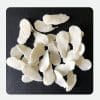
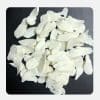
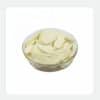
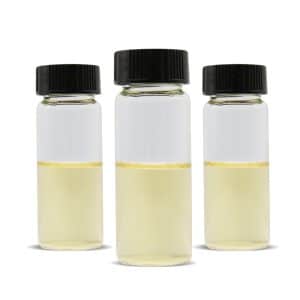
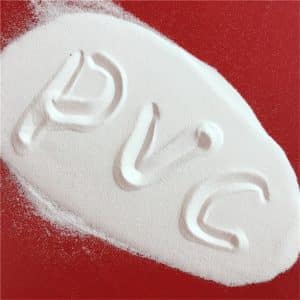

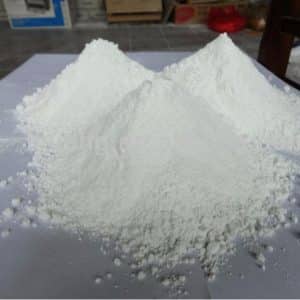

Reviews
There are no reviews yet.